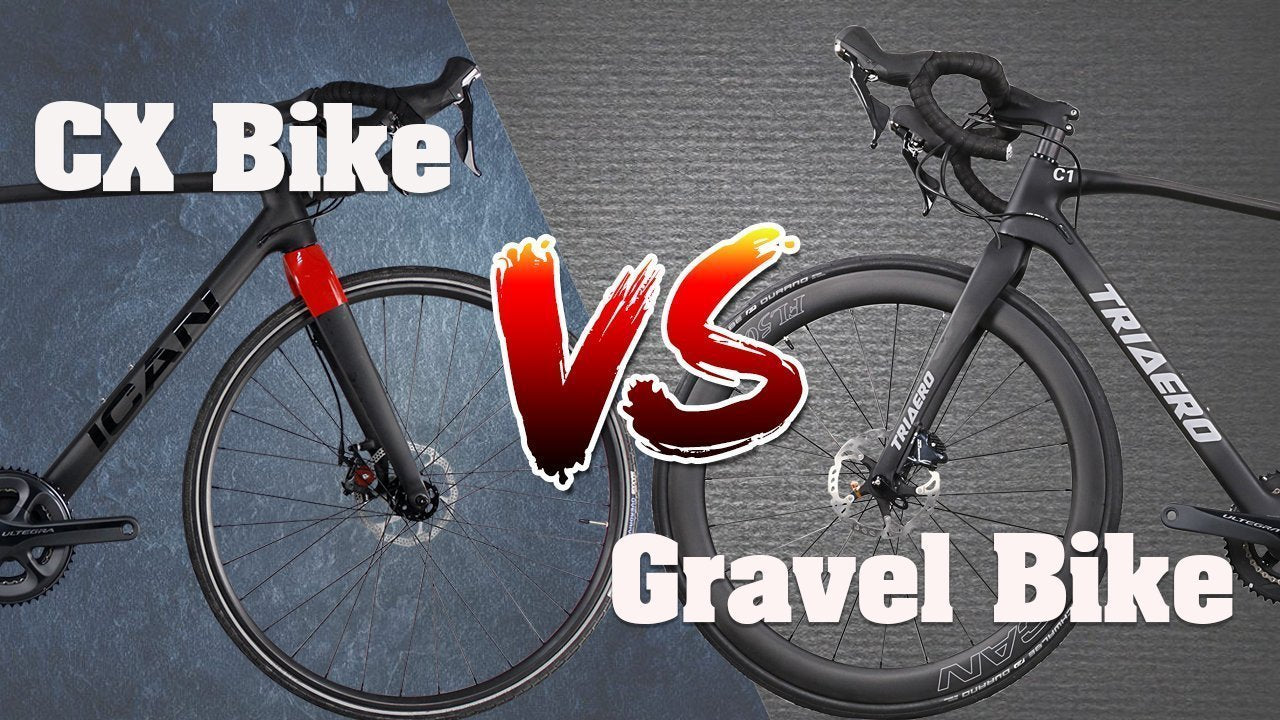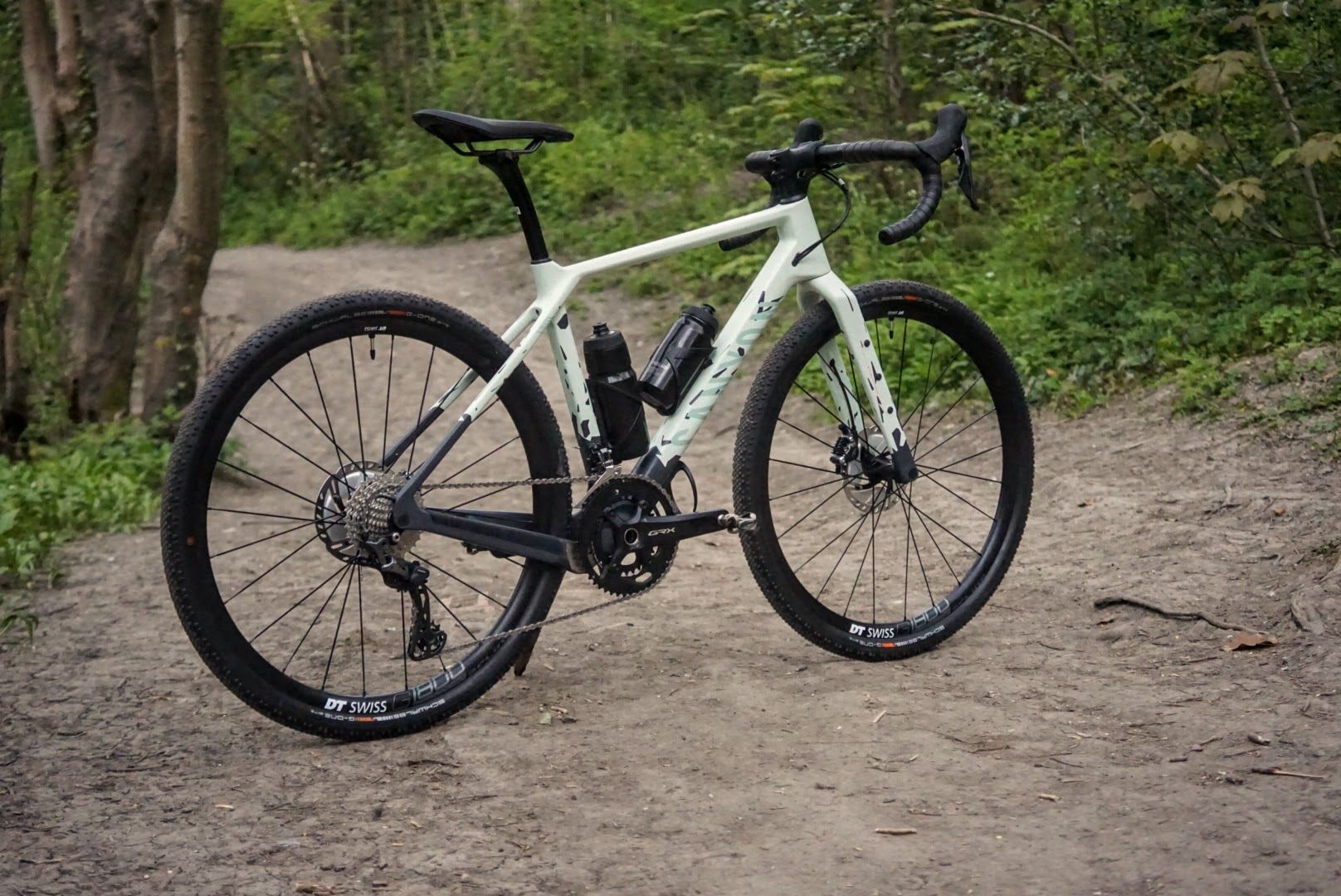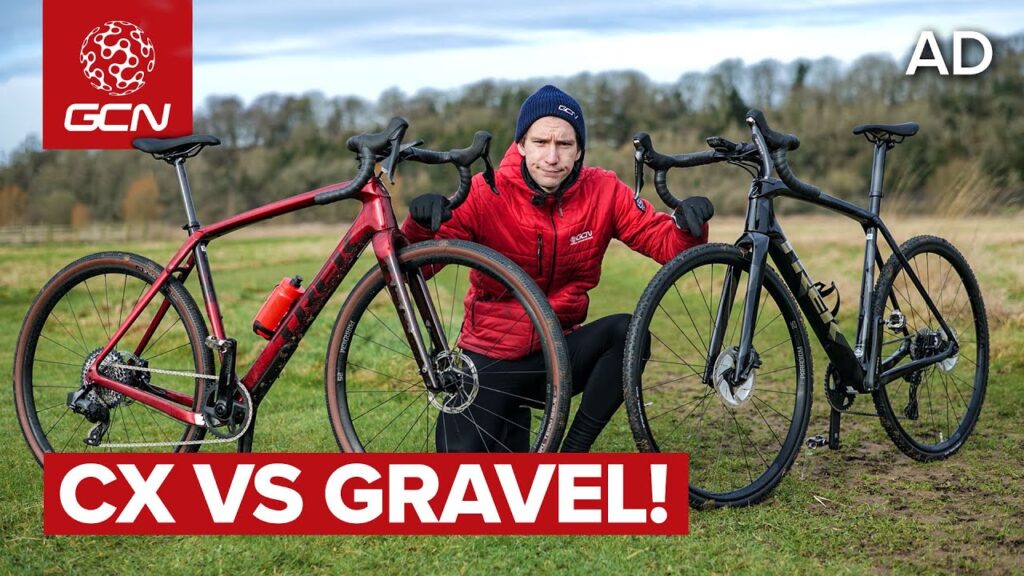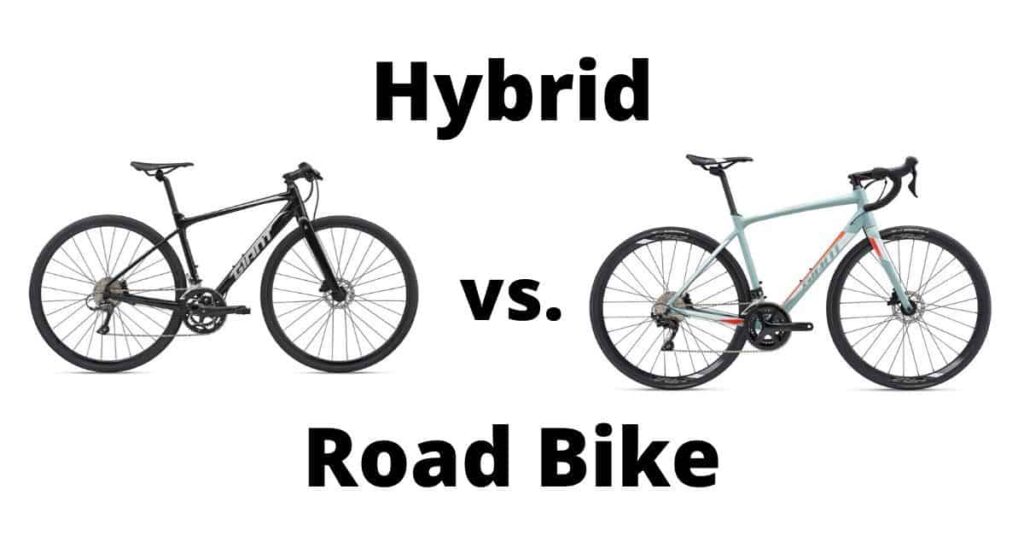Are you stuck in the decision-making crossroads between cyclocross bike vs gravel bike? You’re not alone.
Many enthusiasts find themselves puzzled over which two-wheeled marvel to choose. Both bikes offer thrilling rides and unique experiences, but which one truly aligns with your adventurous spirit? Imagine cruising through rugged terrains with ease, or perhaps navigating city streets with unmatched agility.
Cyclocross Bike and Gravel Bike has its own allure and purpose. Your choice could transform your riding experience. Dive deeper into this comparison to discover which bike truly resonates with your needs and aspirations, and get ready to elevate your cycling adventures to new heights.
Cyclocross Bike Vs. Gravel Bike: Bike Design Differences!

Credit: icancycling.com
When choosing between a cyclocross bike and a gravel bike, understanding the bike design differences can significantly impact your riding experience. These bikes may look similar at first glance, but their design nuances cater to distinct riding styles and terrains.
Whether you’re gearing up for a muddy cyclocross race or embarking on a long gravel adventure, knowing what sets these bikes apart can guide you to the right choice.
Frame Geometry
The frame geometry of a bike influences its handling and comfort. Cyclocross bikes typically have a higher bottom bracket. This design is ideal for hopping over obstacles during races. It offers quick and responsive handling, perfect for tight corners and sudden accelerations.
On the other hand, gravel bikes often have a lower bottom bracket. This provides more stability and comfort during long rides on rough terrain. The relaxed frame geometry allows you to enjoy scenic routes with less fatigue. Have you ever felt the difference in stability when switching bikes? It’s all about the geometry.
Tire Clearance
Tire clearance is crucial for the type of terrain you plan to conquer. Cyclocross bikes generally have limited tire clearance. They are designed for narrower tires, typically around 33mm. These tires are perfect for fast-paced racing on smooth and muddy tracks.
Gravel bikes offer generous tire clearance, accommodating tires up to 45mm or more. This allows for wider tires that provide better traction and comfort on uneven surfaces. Imagine tackling a rugged trail with confidence, knowing your bike can handle the bumps and gravel with ease.
As you consider these design aspects, ask yourself: What’s your primary riding environment? Are you racing or exploring? Your answer can lead you to the bike that best meets your needs.
Component Variations of Cyclocross Bike and Gravel Bike

Credit: off.road.cc
Cyclocross bikes feature lightweight frames and aggressive geometry, ideal for racing on mixed terrain. Gravel bikes offer wider tires and a more relaxed geometry, perfect for longer rides on varied surfaces.
Choosing the right bike for your adventurous spirit can be challenging, especially when deciding between cyclocross and gravel bikes. Both are designed for off-road exploration, but they come with distinct component variations that affect your ride experience.
Understanding these differences can help you make an informed decision and get the most out of your cycling experience. Let’s learn into the key component variations: drivetrain choices and braking systems.
Drivetrain Choices
Cyclocross bikes often feature a 1x drivetrain, which means they have a single chainring at the front. This setup is ideal for quick gear changes and reducing complexity during races. You get fewer gears to worry about, making it easier to maintain focus on your speed and handling.
Gravel bikes, on the other hand, typically come with a 2x drivetrain. This means they have two chainrings, offering a wider range of gears. If you’re planning long-distance rides or tackling steep hills, the extra gears can provide more flexibility and efficiency. Imagine climbing a steep hill with ease or cruising on flat terrain without exhausting yourself.
Which setup suits you better? Consider your riding style and the terrains you’ll be exploring. Would you prefer simplicity or versatility?
Braking Systems
Cyclocross bikes often use cantilever brakes, which are lightweight and provide sufficient stopping power for racing conditions. They are easier to maintain and adjust, which is crucial during competitive events where every second counts.
Gravel bikes usually feature disc brakes, offering superior performance in various weather conditions. Whether you’re riding on a rainy day or descending a steep, dusty trail, disc brakes provide consistent and reliable stopping power.
If you value versatility and safety in unpredictable conditions, disc brakes might be your best bet. But if you’re racing or focusing on weight reduction, cantilever brakes could be the way to go. Have you thought about how your choice of brakes affects your riding confidence and safety?
Each component variation plays a significant role in shaping your cycling experience. As you weigh your options, think about your priorities and the adventures you envision. Your decision could be the key to unlocking new paths and making unforgettable memories on two wheels.
Performance On Terrain
When choosing between a cyclocross bike and a gravel bike, understanding how each performs on various terrains is crucial. Your decision may hinge on how each bike handles muddy trails or speeds across gravel roads. Let’s dive into the specifics to see which bike excels in different environments.
Handling On Muddy Trails
Cyclocross bikes are designed with racing in mind, making them nimble and responsive. They can handle tight turns and quick maneuvers, which is perfect for muddy trails. Imagine a bike that grips the slippery surface and lets you steer with confidence.
Gravel bikes, on the other hand, offer stability. Their wider tires and relaxed geometry make them less agile but more forgiving on uneven, muddy paths. If you prioritize comfort over speed, a gravel bike might be your best friend.
Have you ever found yourself struggling to stay upright on a muddy trail? Cyclocross bikes might save you from those frustrating slips. But if you’re someone who likes a leisurely ride, gravel bikes offer a smoother journey.
Speed On Gravel Roads
When it comes to speed, cyclocross bikes are built for acceleration. Their lightweight frames and racing geometry let you fly down gravel roads. If you crave the thrill of speed, this is where cyclocross bikes shine.
Gravel bikes, while not as swift, provide a comfortable ride. Their design allows for longer rides without compromising on comfort. If you’re someone who enjoys the scenic route, gravel bikes offer a pleasant pace.
Have you ever felt the rush of wind as you sprint down a gravel road? Cyclocross bikes can deliver that exhilarating experience. But if relaxation is your goal, gravel bikes offer a steady pace that lets you enjoy the surroundings.
Which terrain performance aligns with your cycling style? Would you choose speed and agility or comfort and stability? Your answers could guide you to the perfect bike for your adventures.
Versatility And Use Cases
Cyclocross bikes excel in muddy, technical terrains with their agile design. Gravel bikes offer comfort on long rides, thanks to their stable frames and wider tires. Each serves distinct purposes, making them ideal for diverse cycling adventures.
Cyclocross bikes and gravel bikes have gained popularity for their versatile use across different terrains and activities. Whether you’re an adrenaline junkie looking for the next race or someone who loves the idea of long, scenic rides, these bikes offer something unique.
Competitive Racing
Cyclocross bikes are specifically designed for short, intense racing over a variety of surfaces. They excel in navigating tight corners, jumping over obstacles, and riding through mud. Their lightweight frames and aggressive geometry make them ideal for competitive racing.
Imagine feeling the rush as you sprint through a crowded cyclocross course, your bike responding to every command, built for speed and agility. If racing is your passion, a cyclocross bike could be your perfect partner.
Long-distance Touring
Gravel bikes shine when it comes to long-distance touring. They offer a more relaxed geometry, which provides comfort for those long hours in the saddle. With options for mounting racks and extra gear, they are perfect for multi-day adventures.
Picture yourself exploring uncharted roads, the world unfolding before you as your gravel bike carries you with ease and comfort. It’s designed to handle a variety of surfaces, making it ideal for those who love to explore and discover new places.
Have you ever wondered which bike best suits your lifestyle and cycling goals? Whether you’re drawn to the thrill of racing or the tranquility of long rides, choosing the right bike can enhance your cycling experience.
Comfort And Ergonomics

Credit: laka.co
Cyclocross bikes offer a more aggressive riding position, ideal for short, intense races. Gravel bikes provide a relaxed stance, enhancing comfort on long journeys. Ergonomic designs on gravel bikes often include wider tires and stable geometry, perfect for diverse terrains and leisurely rides.
When choosing between a cyclocross bike and a gravel bike, comfort and ergonomics play a crucial role. Whether you’re planning a long adventure or a short sprint, understanding how each bike supports your body can enhance your riding experience. Consider how the different features influence your comfort on diverse terrains.
Riding Position
Cyclocross bikes often have a more aggressive riding position. This encourages a forward-leaning stance that suits short, intense bursts of speed. It might not be the best choice for long-distance comfort, especially if you’re planning on spending hours in the saddle.
Gravel bikes, however, are designed with endurance in mind. They typically have a more relaxed geometry. This means you sit more upright, which can reduce strain on your back and neck during long rides.
Think about your riding style and preferences. Do you enjoy the thrill of short races or prefer leisurely long rides?
Suspension Features
Cyclocross bikes generally have limited suspension features. Their design focuses on efficiency and speed. This is great for smooth and predictable tracks but can be harsh on bumpy trails.
Gravel bikes often come with more forgiving suspension options. Some models include shock-absorbing elements in the frame or fork. This can provide a smoother ride over rough terrain, making your journey more comfortable.
Consider where you’ll be riding most often. Will you tackle uneven paths or stick to smoother roads?
Both bike types have their unique appeal. Your choice depends on the balance between speed, comfort, and the adventure you seek.
Cyclocross Bike Vs. Gravel Bike: Durability And Maintenance
Cyclocross bikes excel in tough conditions with robust frames, but require frequent maintenance. Gravel bikes offer durability for long rides, needing less frequent repairs, making them ideal for varied terrains.
Cyclocross bikes and gravel bikes often face different challenges. Knowing their durability and maintenance is key. Each bike type has its strengths. It also has unique requirements for upkeep. Knowing these can help you choose the right bike.
Wear And Tear
Cyclocross bikes are built for racing. They handle mud, grass, and obstacles. Their design ensures sturdiness. Gravel bikes, on the other hand, face rough terrains. They withstand rocks, dirt, and long distances. Their frames are tough. Yet, each bike experiences wear differently. Cyclocross bikes might suffer from frequent impact damage. Gravel bikes face gradual wear from long rides.
Ease of Repairs
Cyclocross bikes require regular maintenance. Racing conditions can cause frequent damage. Quick repairs are crucial. Gravel bikes offer a bit more leeway. Their components are often simpler to fix. Yet, both bikes need timely attention.
Cyclocross bikes may need more frequent checks. Gravel bikes demand careful inspection after long rides. Repairing both requires basic tools and knowledge. Keeping them in top shape extends their life.
Price And Value of Cyclocross Bike Vs Gravel Bike
Cyclocross bikes often cost less but offer less versatility compared to gravel bikes. Gravel bikes provide more value with their adaptable features, suitable for varied terrains. Both options present unique benefits, balancing price and function for different cycling needs.
Choosing the right bike means understanding the price and value of each option. Cyclocross bikes and gravel bikes, though similar, offer different benefits that can impact your wallet. Let’s dive into the financial aspects to help you make an informed decision.
Budget Considerations
When looking at cyclocross bikes, you’ll often find them priced on the higher end. This is due to their specialized design for racing and specific terrain. However, if you’re on a budget, there are still affordable models that provide good performance.
Gravel bikes, on the other hand, often offer a wider price range. This makes them more accessible if you’re looking for a versatile bike without breaking the bank. Consider your primary use—are you racing, or do you want a leisurely ride on various terrains?
Investment Longevity
Cyclocross bikes, with their focus on racing, can wear faster if frequently used in tough conditions. This might mean more frequent maintenance costs. Yet, they hold value if you’re committed to cyclocross racing.
Gravel bikes are built for endurance and adaptability. They tend to last longer, especially if you’re not pushing them to their limits regularly. Is it better to invest in a bike that might cost more upfront but requires less maintenance over time?
Reflect on how you use your bike and where you want it to take you. Your choice could impact not just your current budget but your future enjoyment and expenses.
Frequently Asked Questions
Can You Use A Cyclocross Bike As A Gravel Bike?
Yes, you can use a cyclocross bike as a gravel bike. Cyclocross bikes handle rough terrain well. They offer versatility, making them suitable for gravel riding. Ensure the bike’s tire clearance accommodates wider tires for better comfort and grip on gravel. Adjust gearing if needed for varied terrains.
What Is The Difference Between A Cyclocross And Gravel Bike?
Cyclocross bikes are designed for racing and have aggressive geometry. Gravel bikes offer relaxed geometry and versatility for mixed terrains. Cyclocross bikes feature narrower tires for speed, while gravel bikes have wider tires for stability. Gravel bikes often include mounts for gear, unlike cyclocross bikes.
Are Cyclocross Bikes Good For Touring?
Cyclocross bikes can be good for touring. They offer durability, wide tire clearance, and versatility. Their lightweight frame is suitable for mixed terrain. Ensure you add racks and panniers for better load capacity. With proper adjustments, they provide a comfortable ride for touring adventures.
Are Cyclocross Bikes Good For Hills?
Cyclocross bikes are great for hills due to their lightweight frame and versatile gearing. Their knobby tires offer excellent traction, making climbs easier. Designed for varied terrain, they handle steep inclines efficiently. Cyclocross bikes combine speed and stability, ideal for both racing and recreational hill rides.
Conclusion
Choosing between a cyclocross and gravel bike depends on your needs. Cyclocross bikes offer speed and agility for races. Gravel bikes provide comfort and versatility for long rides. Consider your terrain and riding style. Cyclocross bikes perform well in short, intense bursts.
Gravel bikes excel on varied surfaces over longer distances. Think about your goals and preferred trails. Both bikes have unique strengths. Test rides can help you decide. Every bike brings its own adventure and joy. Remember, the best bike is the one you love to ride.



